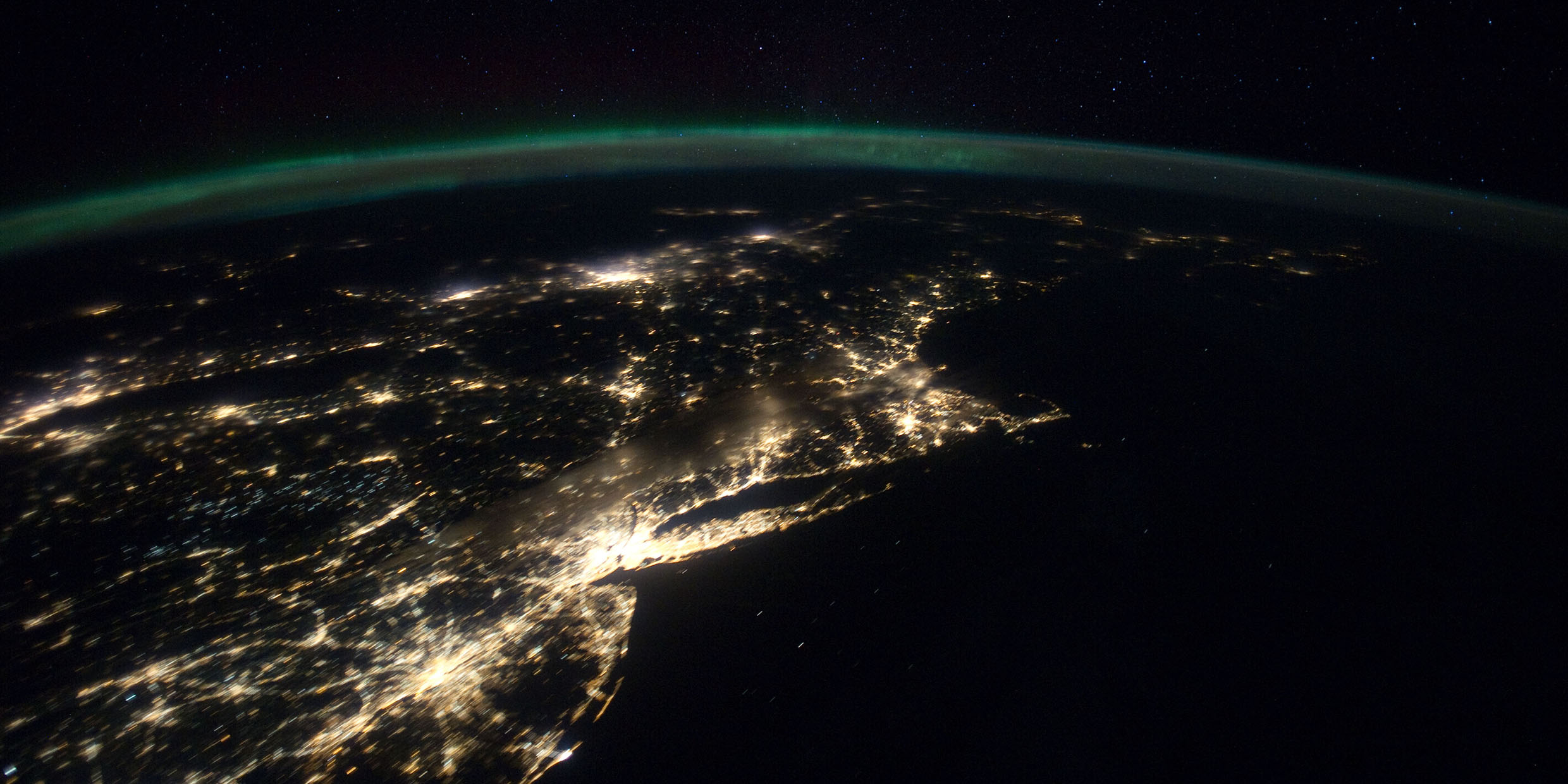Originally published 15 February 1999
A few weeks ago I was with a group of students from MIT and Salem State College under clear dark skies at the Caribbean Marine Research Center in the Bahamas.
The Center has an island to itself with few lights. Far away to the south one could just make out the faint glow of George Town on the island of Great Exuma, but overhead the night was jet black and filled with stars — so many stars it was difficult to make out the patterns of the constellations.
I pointed out familiar things — Orion, the Pleiades, the North Star, the bowl of the Big Dipper peeking over the horizon. I also showed the students things they had never seen before. The winter Milky Way flowing at Orion’s back. The Beehive in Cancer, a blur of light from a cluster of stars too faint to see individually. The Double Cluster in Perseus, another blur, elongated, the light from two adjacent star clusters. The zodiacal light streaming vertically from the western horizon, sunlight reflected from dust in the inner solar system.
Earlier that evening we had watched a 30-hour-old moon, eyelash thin, kiss the horizon with its wispy arc.
These things were commonplace to our ancestors. Beautiful things. Hints of the majesty and complexity of the universe. As we watched we tried to imagine ourselves whirling on our multiple journeys — on the spinning Earth, orbiting the sun, in a spiraling galaxy, and racing outwards from the Big Bang.
For most of the history of the human race, the night sky inspired religion, mythology, timekeeping, navigation, science, and mathematics. To a generally unappreciated extent, human culture is a product of our attention to the stars.
That’s all gone now for many of us. The night sky has been washed away in a sea of artificial light.
Imagine listening to a live string quartet outdoors in Times Square at rush hour; that’s the aural equivalent of looking at the night sky from the environs of a city or suburb.
Light pollution is especially troublesome for astronomers. Their ability to peer deeply into the universe is compromised by artificial light. And much of the harmful light serves no useful purpose for the communities that produce it.
Go to the website of the International Dark Sky Association and look at satellite photographs of the nighttime Earth from space — lit up like a Christmas tree. The eastern United States, in particular, shows up in the photos as a sprawling luminous blotch. The light directed upwards does nothing useful on the ground. It does, however, scatter through the atmosphere and shroud the planet with a baleful glow that obscures the stars.
The International Dark Sky Association tries to educate the public on economically-advantageous lighting alternatives that accomplish a required purpose — business, travel, security, esthetics — while being minimally intrusive where light is not wanted or needed. They estimate that wasted, upward-directed light costs this country a billion dollars a year.
They make this analogy: “If we had a water sprinkler system that wasted much of its water by scattering water everywhere — onto the street, through our neighbor’s windows, and upward to encourage evaporation — we’d not tolerate it for long. If together we wasted a billion dollars a year this way, we’d declare it a national disaster.”
Some of this country’s major astronomical facilities, including the world’s fifth largest telescope, are located on Mount Hopkins in Arizona, 40 miles south of Tucson. In 1972, Tucson was the first major city to create an outdoor lighting code to reduce streetlight glare and sensibly restrict commercial and residential lighting. Since that time, city residents and astronomers have lived in relative harmony.
This alliance was threatened recently by a developer’s proposal to build 6,000 homes and a large commercial district on a former ranch at the base of Mount Hopkins. After a heated battle between developer and astronomers, the Pima County Board of Supervisors last month turned down the proposal.
For the moment, the observatories are protected, but no one in the astronomical community is hopeful about the long term. Our view into the universe will not be safe until all of us recognize that wasted light is depriving us of something important to the human spirit — knowledge and experience of the universe that spawned us.
During the next few weeks, Venus, Jupiter, Mercury, Saturn, and the moon will put on a spectacular show in the evening sky, including a magical conjunction of the two brightest planets on February 23 [1999]. Cocooned in our wrap of artificial light, few of us will even be aware that something special is going on. If our neighbors and municipal authorities assaulted our sense of hearing the way they frustrate our vision, we would be up in arms. Somehow, we accept light pollution as a matter of course.
The students who visited the Caribbean Marine Research Center were deeply aware of the need to keep the sea and atmosphere free of chemical pollutants. However, like most of us, they had not given much thought to one of the most pernicious pollutants of all — wasted light that separates us from the majesty of night.



